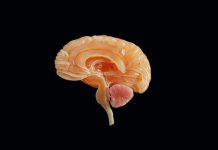
Researchers at Mayo Clinic have introduced an innovative tool called the “corticolimbic index” that advances our understanding of Alzheimer’s disease by categorizing its impact based on specific brain changes.
Published in JAMA Neurology, their study presents a way to differentiate Alzheimer’s disease into three subtypes according to where in the brain toxic tau protein tangles accumulate, which directly affects the disease’s progression.
This tool builds on previous research and aims to dissect the disease’s complex pathology by observing the location and impact of these tau protein tangles, which are crucial in the deterioration of brain cells linked to Alzheimer’s.
By assigning a score to these locations, the corticolimbic index helps clarify how Alzheimer’s differs among individuals, potentially leading to personalized treatment approaches.
Melissa E. Murray, Ph.D., a translational neuropathologist at Mayo Clinic in Florida and the senior author of the study, highlighted the significance of the findings.
The study revealed marked differences in disease characteristics related to the patient’s age at onset, rate of cognitive decline, and even differences between sexes.
This indicates that Alzheimer’s affects individuals distinctly, which could alter how treatments are tailored in the future.
The research utilized brain tissue samples from nearly 1,400 patients, spanning from 1991 to 2020.
These samples were part of the Florida Autopsied Multi-Ethnic (FLAME) cohort at the Mayo Clinic Brain Bank, involving diverse ethnic groups including Asian, Black/African American, Hispanic/Latino American, Native American, and non-Hispanic white individuals.
This wide-ranging cohort underscores the tool’s applicability across different demographics.
Further validation of the corticolimbic index’s clinical relevance came from studying living patients at Mayo Clinic who underwent neuroimaging.
These tests, which included MRI and tau positron emission tomography (tau-PET), confirmed that the index scores were consistent with observed changes in the brain, particularly in the hippocampus and cortex.
The interdisciplinary team, comprising experts in neuropathology, biostatistics, neuroscience, neuroimaging, and neurology, has significantly advanced our understanding of Alzheimer’s by examining it from multiple angles.
According to Dr. Murray, the corticolimbic index not only enhances understanding of Alzheimer’s as a multifaceted disease but also sets the stage for personalized care, offering hope for more effective therapies tailored to the unique characteristics of each patient’s condition.
Looking ahead, the Mayo Clinic team plans to make the corticolimbic index tool available to radiologists and other medical specialists, which could revolutionize the clinical management of Alzheimer’s by providing more precise assessments of its progression.
They also aim to use this tool in further research to identify brain regions that are resistant to the effects of tau protein, potentially opening new avenues for treatment and prevention strategies.
This development represents a significant leap towards individualized care and improved outcomes for patients suffering from Alzheimer’s disease.
If you care about Alzheimer’s disease, please read studies that bad lifestyle habits can cause Alzheimer’s disease, and strawberries can be good defence against Alzheimer’s.
For more information about brain health, please see recent studies that oral cannabis extract may help reduce Alzheimer’s symptoms, and Vitamin E may help prevent Parkinson’s disease.
The research findings can be found in JAMA Neurology.
Copyright © 2024 Knowridge Science Report. All rights reserved.



